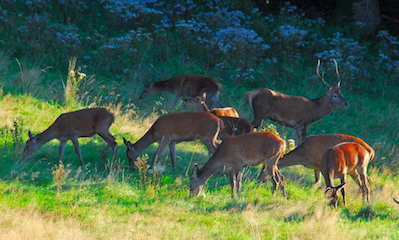- Even though it is easy to find interesting plants in the Park, encountering wild animals does not happen often happen.

- Even though it is easy to find interesting plants in the Park, encountering wild animals does not happen often happen.
- This is a common occurrence in nature. Wild animals avoid humans and employ various techniques to do that. They can move silently or run quickly run away. Others blend in with their surroundings using appropriate colouration or remain motionless until the danger is over. It is much easier to spot animal tracks and signs.
- Are the two not the same?
- Not exactly. Signs are all “information” left by an animal in the wild. Among them we can find droppings, evidence of feeding, resting places and finally the tracks, which are prints of animal limbs. A careful observer will be able to identify more of them and will be able to recreate the story told by them.
- What kind of signs can we find in the Park?
- Within the area of the park there about 50 mammal species, the largest of them are deer. Their population is also large and therefore encountering signs of their existence is relatively easy. Places just visited by deer can be recognised by the hoof prints in soft ground or by a pile of droppings. Signs of a less recent presence, in turn, are recorded in form of trees with visible damage to their bark, parts were consumed by the animal.
- Are there any type of signs typical for just individual species?
- Most signs allow identification of a specific species but that requires considerable amounts of time and effort to novice observers. However, there are signs that most people should be able to recognize. These include wallows, which are place for wild boar mud baths. Pellets with their distinct size and shape inform us of the presence of an owl. They contain undigested remains of their meals.
- Do animals in the Park leave signs in any unusual way?
- Rock cliffs in the Park are a natural barrier to roaming mammals. These areas contain unusual amounts of signs. Inside numerous, spacious openings deer and boars scratch against rocks leaving traces of dried mud mixed with fur. Most foxes do not dig their own burrows but use natural labyrinths between rocks as their shelters. Badgers also inhabit existing passages in rocks, and only occasionally end up digging burrows. Also surprising, is how squirrels use rock crevices for building their nests. The structure of these nests in slightly different from typical ones because only dried grass is used in making them.

